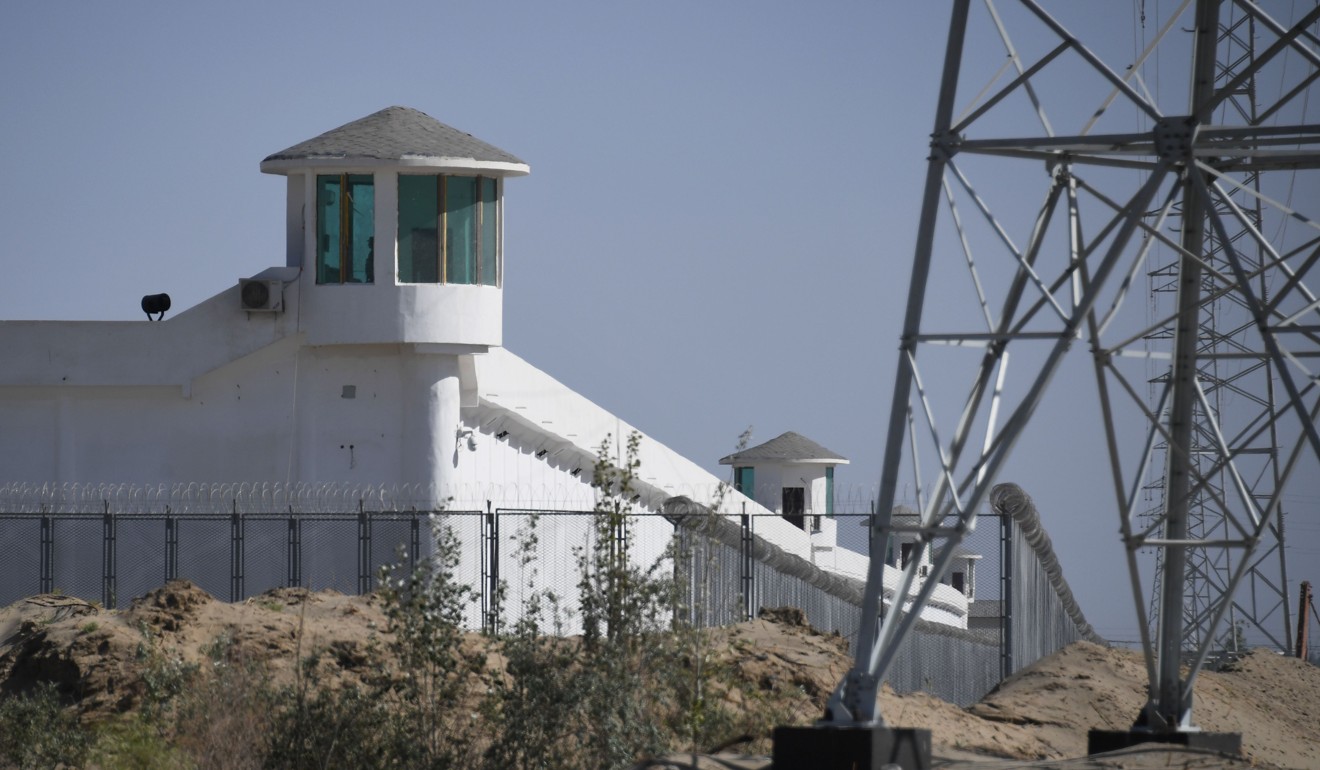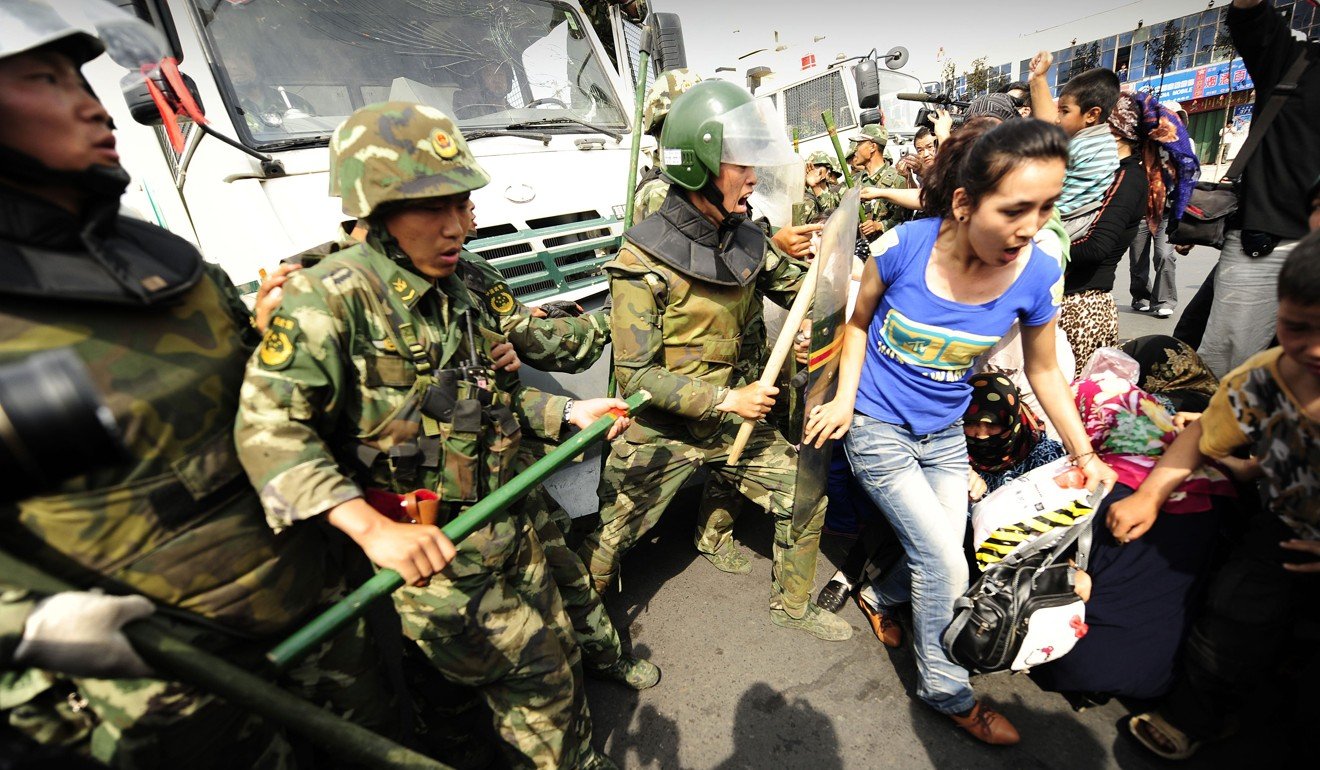
Uygurs, experts reflect on 10th anniversary of deadly riots in Xinjiang
- Riots in July 2009 began as a peaceful protest by Uygur students in Urumqi demanding answers about the killing of two factory workers 4,000km away
- But protests descended into violence, and at least 192 people were killed and more than 1,000 injured, most of them Han

Ten years after deadly riots rocked the city of Urumqi in China’s western Xinjiang region, rights activists are demanding the government release more information about the event.
The riots on July 5, 2009, began as a peaceful protest by Uygur students demanding answers about the killing of two Uygur workers in a factory 4,000km (2,500 miles) away.
Fighting had erupted on June 25 at a toy factory in the southern city of Shaoguan after an anonymous internet post claimed two women from the Han ethnic majority had been raped by six Uygur workers.
In the fight, heightened by tense relations between Han and the Uygurs who had been brought there through a government programme, two Uygur men were killed and more than 120 injured, according to authorities.

The protests in Urumqi also descended into violence, though it is unclear how that happened. At least 192 people were killed and more than 1,000 injured, most of them Han, according to the authorities.
“Ten years later, the Chinese government has not answered calls from governments, international institutions, and human rights organisations to release accurate, detailed information on those detained” or who have disappeared since the protests, said Brad Adams, Asia director for Human Rights Watch.
Among those who disappeared was a relative of Arfat Aeriken, a 21-year-old Uygur from the Xinjiang city of Yining, who now lives in the United States.
Aeriken had just finished junior school in the summer of 2009. He said he remembered the internet was cut off on the night of July 5 and his father told him not to go outside.
“I remember police sirens that night,” Aeriken said. “On TV, they were saying Uygurs [had committed] violent attacks planned by the World Uygur Congress and [activist] Rebiya Kadeer.”
Locals say that summer was a breaking point for Xinjiang and the beginning of a government campaign that experts say aims to eradicate the Uygur culture.

The crackdown has intensified since Chen Quanguo, the former Communist Party leader of Tibet, was transferred to rein in Xinjiang in 2016. An estimated one in six adults from Muslim minority groups, or 1.5 million people, have been placed in internment camps since then, according to independent researcher Adrian Zenz.
Outside the camps, Uygurs are subject to a surveillance network that includes frequent checkpoints equipped with facial recognition machines, security cameras placed inside people’s homes and Han officials who forcefully live with Muslim families.
“Since 2016, Beijing has been using the suspicion of terrorist intentions or links as a cover for blanket ethnic prejudice and as justification for massive, systematic repression,” said Kristin Shi-Kupfer, a researcher at the Mercator Institute for China Studies in Berlin.
“The recent measures, including systematic arrests and forced internment, aim to assimilate a whole ethnic group, the break their cultural identity,” she said.

Muyesser Abdulehed, a Uygur poet who moved in 2012 with her family from Urumqi to Istanbul, said there had been tensions ever since she was a child. Her father always expected it would get worse, and he was right.
“He knew that sooner or later we would be imprisoned,” she said. “And I knew he was telling the truth. Because if now I were in Urumqi, I would be imprisoned.”
Last week, Xinjiang’s vice-chairman, Aierken Tuniyazi, told the UN Human Rights Council that no terrorist attacks had occurred in the region in three years.
On Wednesday, Chen Xu, head of the Chinese mission to the United Nations in Geneva, said only under overall social stability could Xinjiang achieve great progress, Xinhua reported.
“Setting up vocational education and training centres is the centrepiece of the programme,” he said. “These centres provide courses on the country’s common language, legal knowledge, and vocational skills in response to the needs of the trainees and integrate deradicalisation throughout the entire education and training process.
“Trainees were able to get back on track to a normal life and stop from falling prey to terrorism and extremism,” he said.
But experts say the absence of visible violence belies the ongoing repression of minority culture and inequality between the Han majority and Uygurs.
“There’s a lack of trust,” said Reza Hasmath, a professor at the University of Alberta who has studied ethnic relations in Xinjiang.
Tough policies such as the re-education camps “are going to suppress any potential violence”, he said.
“But it still creates a generation of distrust with Han people among Uygurs.”
Additional reporting by Agence France-Presse